Besiders
Inked by a Legend
Whang-od Oggay is the last traditional tattoo artist from the old generation in the Kalinga region in the northern Philippines. This internationally acclaimed tattooist has single-handedly ensured the survival of this traditional art for the next generation.
Text — Mark Mann
Photos — Fred Wissink
Whang-od Oggay has seen some changes in her time. She’s the last of her kind, a tattoo artist, or mambabatok, from the elder generation of the Butbut tribe in the Kalinga region of northern Philippines. Now believed to be more than a hundred years old (her exact age is unknown, even to her), Oggay first started tattooing when the warriors of her tribe were still going to war with neighbouring tribes and returning with the heads of opponents they’d killed. Today, she’s one of the most venerated tattoo artists on the planet, and hundreds of people from all over the world swarm her tiny mountaintop village every day in the hopes of getting inked by a living legend.
Oggay employs a style of tattooing called batok, or hand-tapping. All tattoos hurt, but this is a uniquely painful method. The ink is a simple mixture of charcoal and water, which is rubbed onto the tip of a thorn plucked from a pomelo tree (the one behind her house, in fact) and then vigorously hammered under one’s skin using two pieces of bamboo. Oggay draws her design onto her subject with a piece of straw and then needles it in at a rate of 100 taps per minute. Not everyone can handle it, but those who do are graced with perhaps the most authentic traditional tattoo in the world today.
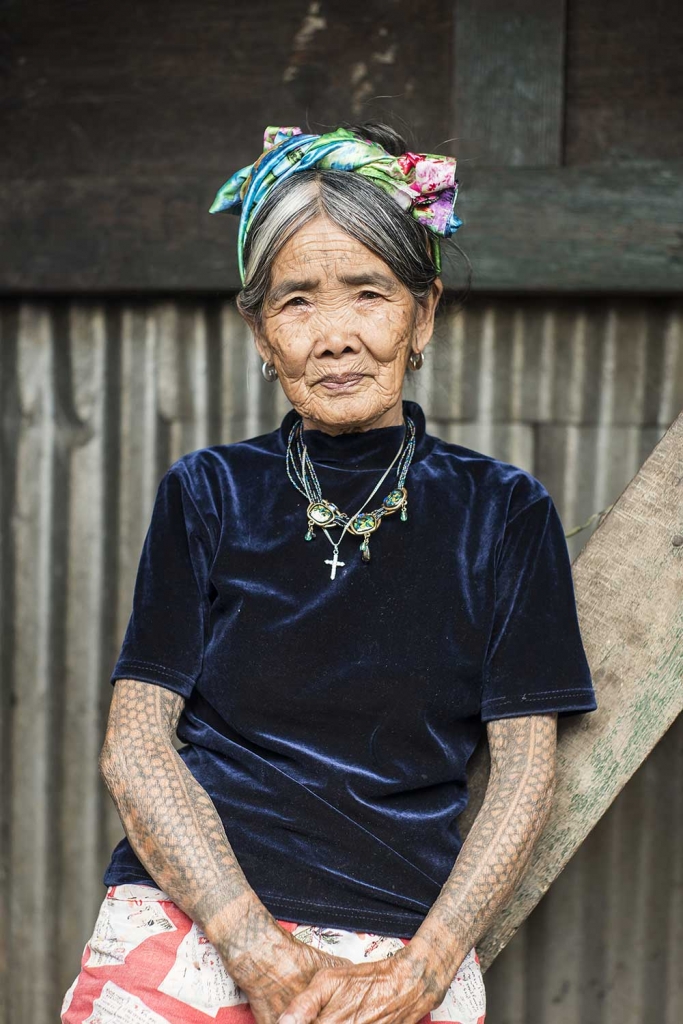
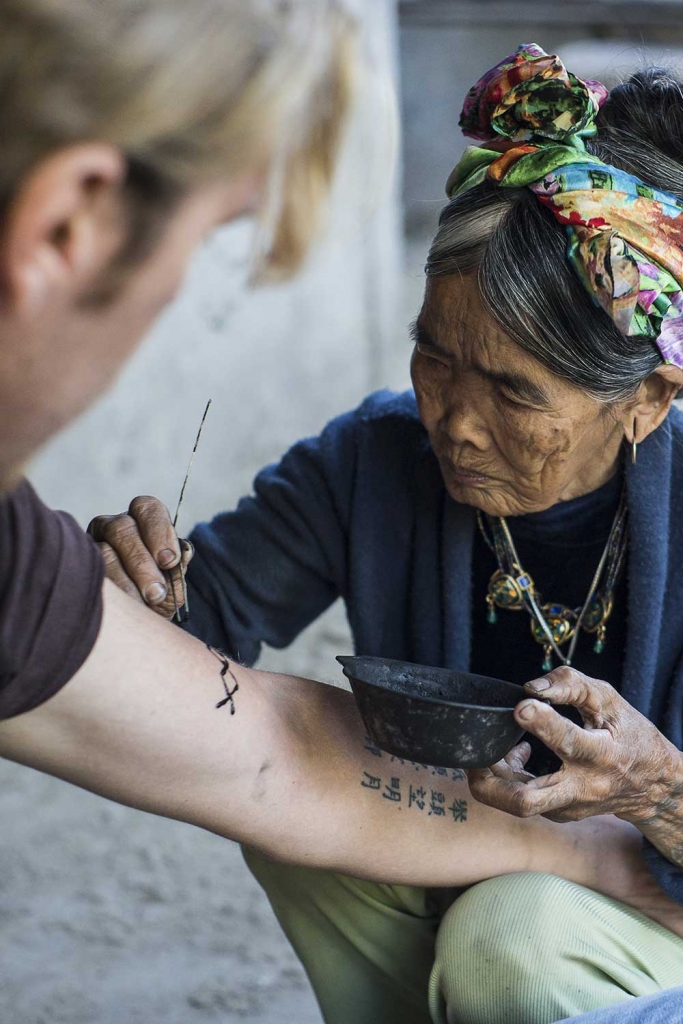
Oggay herself is a strict traditionalist. Though keen to ensure the survival of her art, she refuses to pass it along to anyone outside her tribe, because she believes that the practitioner must be part of her bloodline. Thus, she has only two pupils, Grace Palicas and Elyang Wigan, both great-nieces of Oggay’s and both eager to follow in her footsteps.
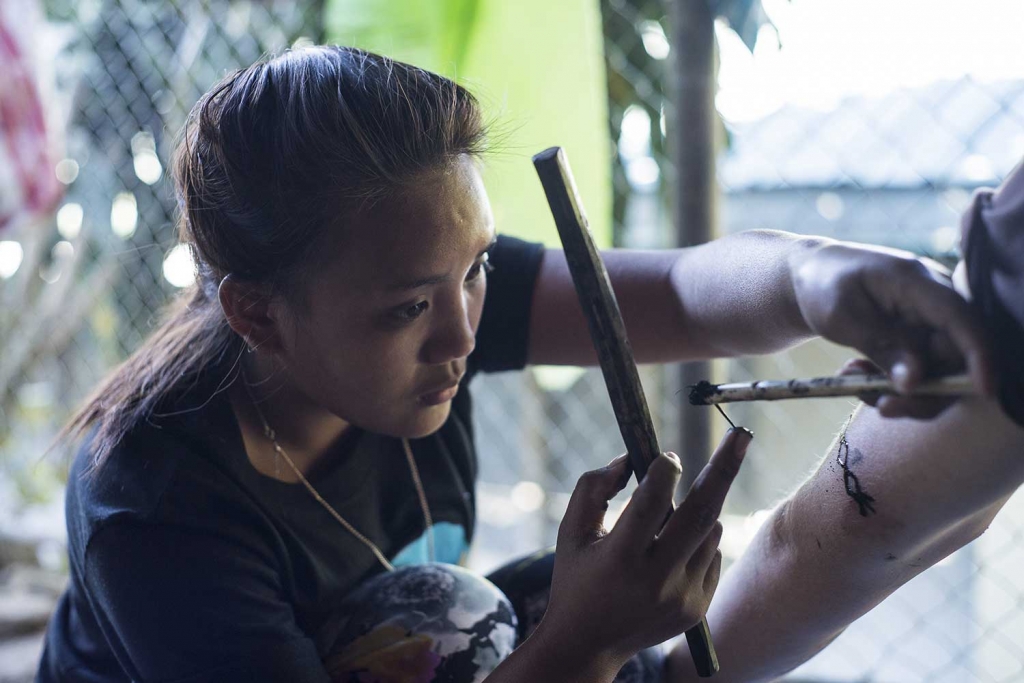
A woman of immense beauty, Oggay boasts glittering eyes, a confident demeanour, and elegant full-body tattoos that convey the strength of her people and the depth of her lived experience. The Kalinga region is a land of thick jungles and layers of rice terraces carved into the mountainsides, but contrary to the natural beauty, the word “Kalinga” means outlaw: a testament to the region’s historic reputation as a place of danger and violence for outsiders. Through centuries of occupation of the Philippines, first by Spain, then the U.S., and then Japan, the region never fell to the control of colonizers. Whang-od’s only romantic partner died during the Japanese occupation of the Philippines — since then, she never married or had children, instead dedicating herself to tattooing.

Though she rarely leaves her small, remote village of Buscalan, Oggay’s fame has travelled far and wide. Buscalan received 170,000 visitors in 2016, up from 30,000 in 2010. But the influx of tourists has not always been kind to the village. Litter is a problem, and Oggay doesn’t like people invading her personal space to take photos. However, she recognizes that her popularity has created a new economy for her tribe, as well as helped to ensure the survival of their traditional artwork, and so she accepts the compromise.
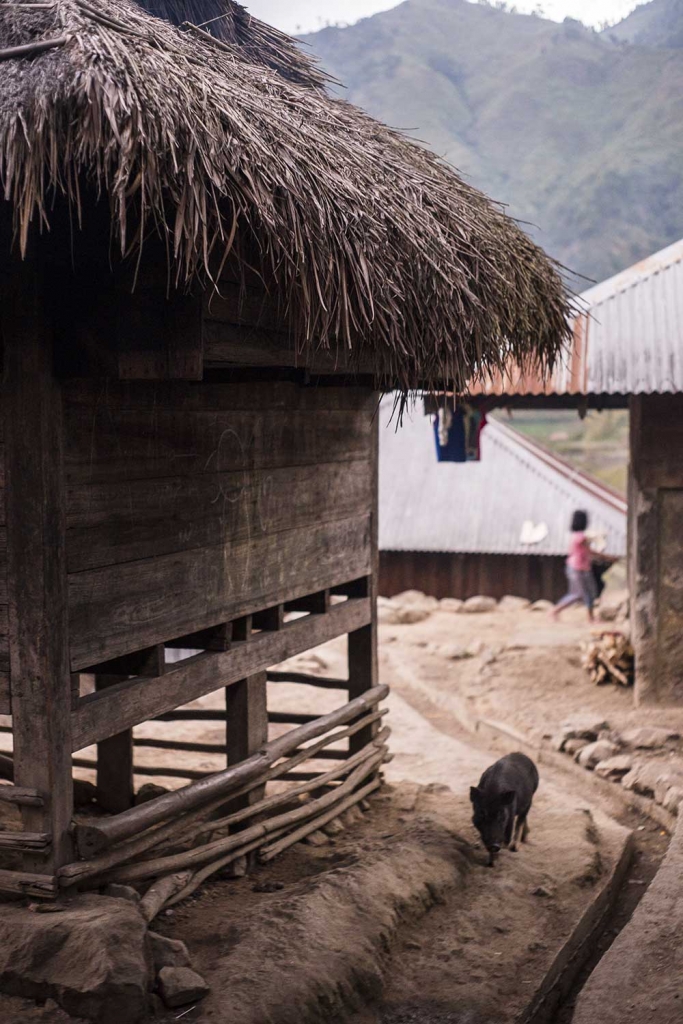
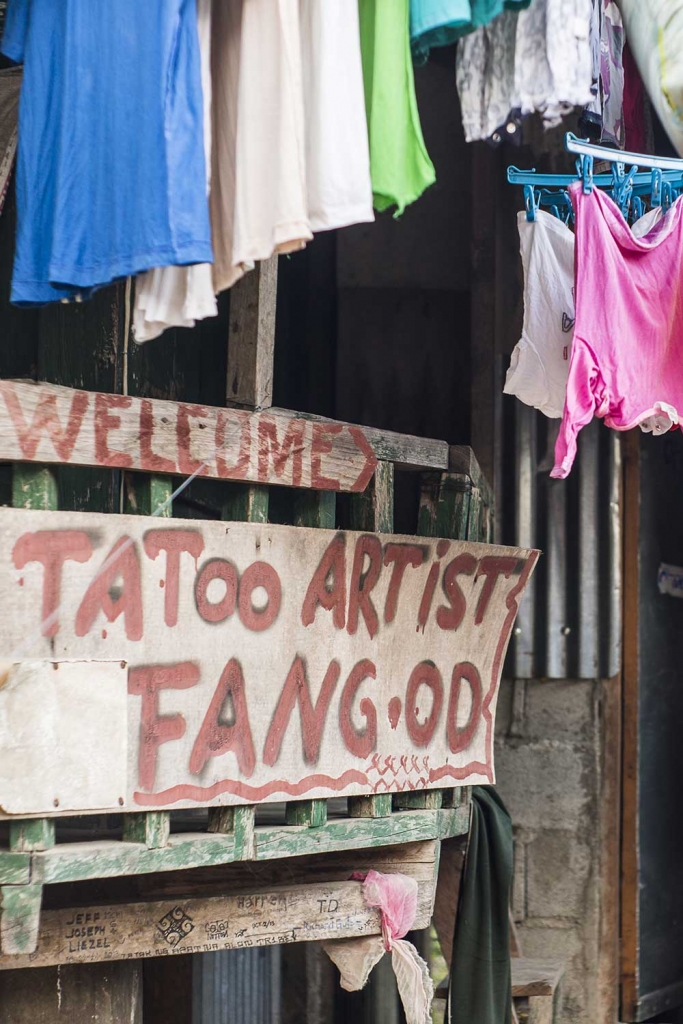
Oggay’s fame doesn’t seem to preoccupy her, though; nor does she seem to resent the grinding work schedule, tattooing seven days a week from eight in the morning until five at night. Carrying on the tradition is simply too important. “I have a great responsibility. With every tattoo, I am sharing a piece of Kalinga’s history and culture with someone new,” she has said. She’ll continue till she loses her eyesight, she says. Then at last she can rest and let others take up the mantle.
Never Miss Another Issue
Two issues per year
25% OFF previous issues
Free Shipping in Canada